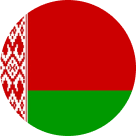The country has two main academies to regulate language norms. One is general and the other deals only with the study of the Moldovan language, although it is not officially considered a separate language and is attached to Romanian. Let’s take a closer look at why this is the case. It will be useful for those who translate into Romanian.
A bit of history
At the end of the war between the Russian and Ottoman Empires, the eastern part of Moldavia passed into Russian lands. After that, the Moldovan part came to be called Bessarabia. Here, the Moldavian language, based on the Cyrillic alphabet, was actively formed. The Romanian state was formed a few decades later.
After such formation, many Slavic words disappeared from the usual language. But speech patterns that originally occurred in Italy and France were actively introduced. At that time the process of transition from the Cyrillic alphabet to the Latin alphabet began. It was completed in a few years. But Bessarabia joined Romania much later.
After another two decades, the fusion of the Moldovan and Romanian languages began. For this purpose, there was even a reform, according to which the central part of Moldova was taken as the basis of the new linguistic norms. The convergence was completed by the 1980s. The two linguistic orientations became almost identical.
Features of modern norms
Nowadays, translation of Moldovan (especially literary style) is essentially a matter of working with the Romanian vocabulary. In the process you will notice a large number of Slavicisms.
Adopted speech patterns from Slavic languages make up a large part of the general colloquial vocabulary. For example, «a iubi» (to love), «vesel» (merry), «bogat» (rich). It is worth noting that Slavicisms overlapped the norms of Romance languages in Romanian. Another striking example: «to love/love» is denoted not as «amare/amor» but as «a iubi/iubire».
But for all the abundance of adopted words, the Latin «albus» remained exclusively in Romanian. The word was further transformed into «alb». In the other Romance languages, the lexeme did not survive.
If you translate names of numerals, you will also notice the influence of Slavic languages. Take «douazeci — twenty» as an example. The number consists of «two» and «dzat».







